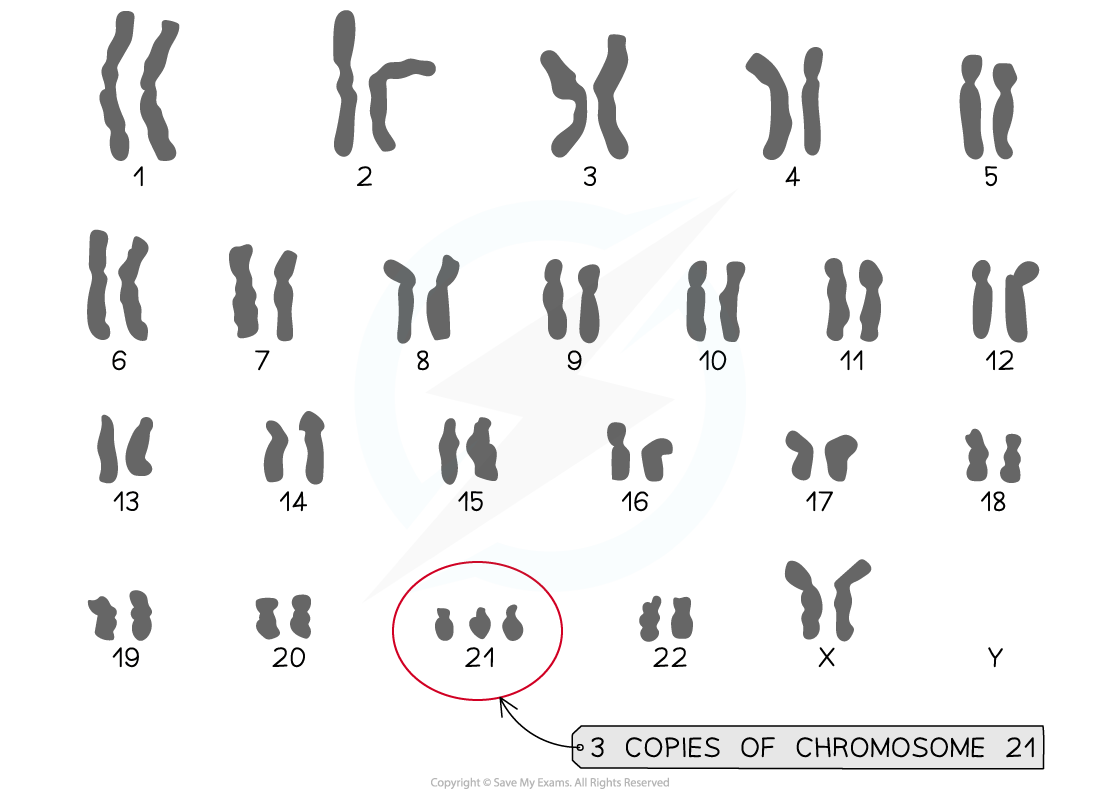Mutation (Cambridge (CIE) O Level Biology): Revision Note
Exam code: 5090
Mutation
The term mutation can be defined as follows:
A random change in the DNA base sequence
Most mutations have no effect on the phenotype of an organism, as the protein for which a gene codes may work just as well as the protein from the non-mutated gene
Mutations can lead to harmful changes that can have dramatic effects on the body, for example sickle cell anaemia in humans
Mutation example: sickle cell anaemia
The mutation that causes sickle cell anaemia occurs in the gene that codes for haemoglobin, and so affects the structure of the haemoglobin protein
Individuals with this mutation have red blood cells that are stiff and sickle-shaped
The sickled cells tend to get stuck in narrow blood vessels, blocking the flow of blood
As a result, those with sickle cell disease suffer painful “crises” in their joints and bones when blood flow to these regions is insufficient
They may suffer strokes, blindness, or damage to the lungs, kidneys, or heart.
They must often be hospitalised for blood transfusions
Sickle cell anaemia diagram

Sickled red blood cells are unable to bend, so can get stuck in the blood vessels, blocking blood flow to important organs
Chromosome mutations
Chromosome mutations occur when there is a change in the number or structure of chromosomes
E.g. Down's syndrome is a genetic condition in which individuals have 47 chromosomes rather than 46; this occurs when the chromosomes do not fully separate during meiosis
Down's syndrome is sometimes referred to as Down syndrome, or as Trisomy 21

Individuals with Down's syndrome have an extra copy of chromosome 21
Mutation as a source of genetic variation
Mutation contributes to genetic variation in populations, as it can give rise to new alleles which may be passed on to offspring
Other sources of genetic variation are:
Meiosis
The cell division that gives rise to gametes produces daughter cells which contain new combinations of alleles
Random mating
The selection of a mate within a population may occur at random, and will result in offspring with a new combination of alleles
Random fertilisation
Only one male cell will fuse with a female cell during fertilisation, determining the combination of alleles in the fertilised egg cell
Factors that affect mutation rate
Mutations happen spontaneously, meaning that they do not need a specific trigger event, but their frequency can be increased by exposure to:
Ionising radiation, e.g. gamma rays, x-rays and ultraviolet rays
Some chemicals, e.g. chemicals such as tar in tobacco
Increased rates of mutation can increase the probability that cells may become cancerous, which is why the factors above are linked to increased incidence of cancer

You've read 0 of your 5 free revision notes this week
Unlock more, it's free!
Did this page help you?